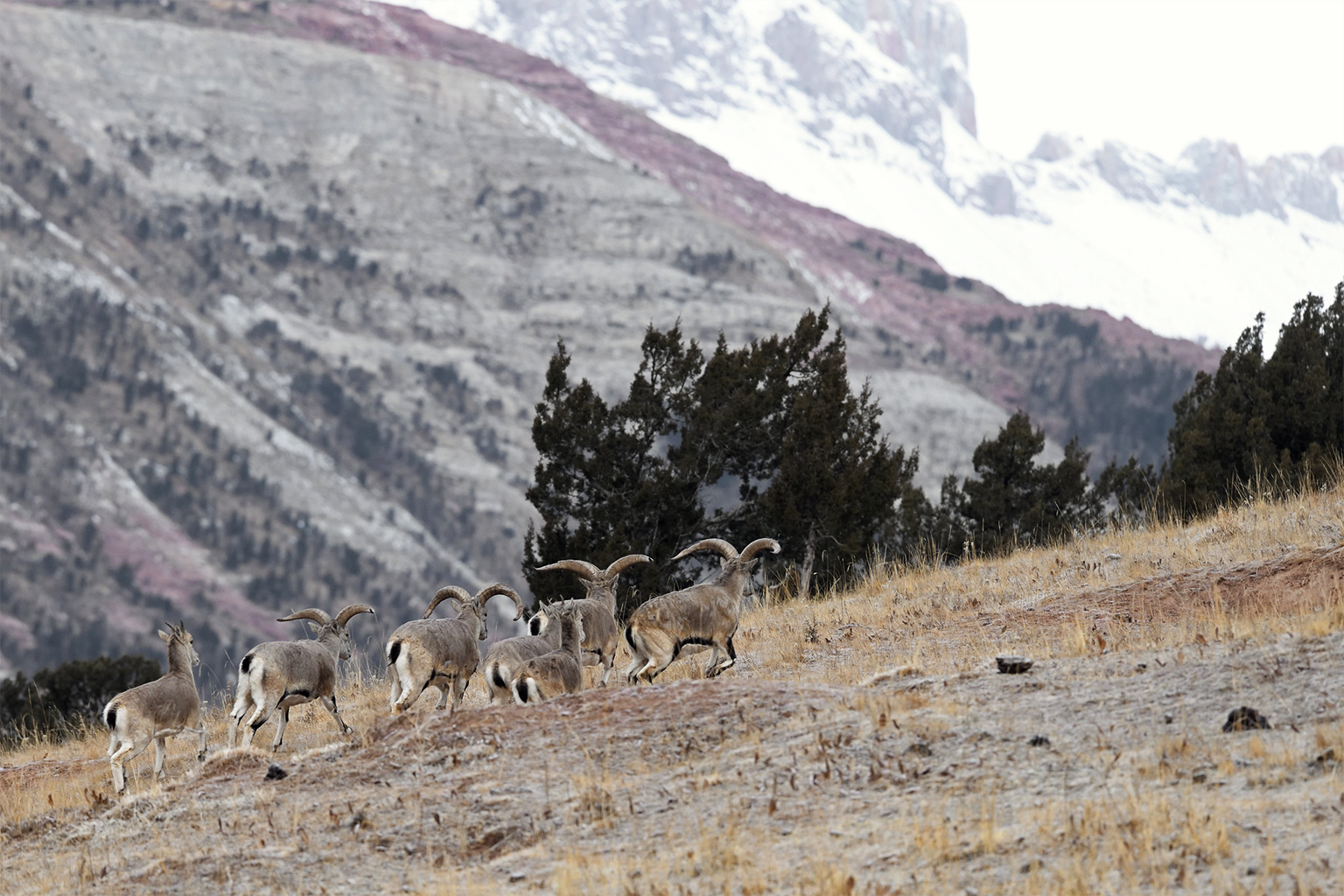- Nepal’s new snow leopard conservation plan for 2024-2030 marks a shift in focus from research and monitoring to community engagement and conflict resolution.
- The plan has a significantly increased budget of $14.24 million and allocates 26% to combat illegal wildlife trade by improving intelligence, law enforcement, and international collaboration.
- The plan acknowledges the impact of livestock depredation by snow leopards on local communities, which can lead to retaliatory killings and exacerbate human-wildlife conflict.
- Nepal still doesn’t have a scientific count of the number of snow leopards in the country.
KATHMANDU — Nepal’s government recently launched its new conservation action plan for snow leopards, marking a shift in priority from research and monitoring to conflict resolution and community engagement.
The shift is evident from the allocation of resources for different components of the action plan. While the previous plan gave the leopard’s share of funding to research and monitoring, the new one places greater emphasis on mitigating conflicts between the big cats and humans, and engaging with potentially affected communities.
“This shift marks a growing understanding among policymakers that communities living with snow leopards play an important role in their conservation,” said Madhu Chetri, one of the reviewers of the action plan that will be implemented between 2024 and 2030, and a longtime researcher of snow leopards (Panthera uncia).
A comparison between the previous plan (2017-2021) and the new one shows that while the old plan allocated 30% of its budget to research and monitoring, the new one prioritizes community engagement and conflict mitigation with 35% of the budget. The overall budget has also been increased significantly, from $3.15 million to $14.24 million to be spent within the implementation period.

Human-wildlife conflict is a multifaceted issue in Nepal’s mountains, hills and plains home to various iconic yet threatened species, such as Bengal tigers (Panthera tigris), greater one-horned rhinos (Rhinoceros unicornis), leopards (Panthera pardus) and Himalayan wolves (Canis lupus chance). At the heart of this conflict lies the agrarian lifestyle of people in the villages.
For those in the mountains living in snow leopard habitat, attacks on livestock have severe repercussions. The big cats, also known as the “ghosts of the mountains,” often engage in what’s known as “surplus killing,” where they kill multiple livestock in a single event, even if they’re sated from their first kill. There are cases where livestock have been known to die from fear when a snow leopard enters their pen.
In March 2021, a snow leopard killed 52 mountain goats belonging to a single herder in the Himalayan region of Upper Dolpa in western Nepal. In February 2022, another herder, also in Dolpa, lost 98 sheep and goats to a snow leopard attack. In November 2023, four snow leopards entered an enclosure built for goats in Mustang and killed 82 of them, leaving eight goats injured.
The action plan concedes that incidents like these add to the frustrations of local communities. It also acknowledges that economic losses caused by the killing of livestock could trigger retaliatory killings of the big cats.
Such killings, by means of poisoning and snaring, may already be happening, researchers say. But their scale and impact on the snow leopard population remains a mystery. “As both the communities and the snow leopards live in remote areas, it’s nearly impossible to track what’s going on at the population level,” said researcher Bikram Shrestha, who wasn’t involved in the preparation of the action plan.
Nepal still doesn’t have an official count of snow leopards in the country, let alone numbers to indicate whether their numbers are growing or shrinking. It’s estimated around 300-400 snow leopards (about 5-10% of the global population) roam Nepal’s mountains. But this estimate is based on small-scale studies dating back to the 1980s and ’90s.
“As snow leopards live in large landscapes shared between different countries, it’s not easy to carry out a census like the way we do for Bengal tigers,” said Shyam Kumar Shah, spokesperson for the Department of National Parks and Wildlife Conservation.

Shah said the government is working to gather data from different sources to come up with a baseline estimate of the snow leopard population in Nepal. “The number will be available soon,” he added.
However, researchers say the number the government is trying to come up with may not reflect reality. Shrestha said the estimate is based on models looking at prime habitats for the animal, and as such doesn’t capture the population living outside these habitats.
The action plan, and those before it, suggest that retaliatory killings could contribute to the illegal trade in snow leopard parts, feeding a cycle that could further add to the challenges of conserving Nepal’s snow leopards.
That’s why the plan allocates the second-biggest portion of the budget, 26%, to addressing the illegal wildlife trade. In broad terms, the plan aims to improve intelligence gathering and surveillance, equip law enforcement agencies with skills and resources, collaborate with international partners, and assess the demand for snow leopard parts in the market.
To address conflict related to livestock depredation, it calls for a mix of insurance and awareness-related programs. “We have long been saying that community-managed insurance schemes hold the potential to reduce human-snow leopard conflict,” said Shah from the wildlife conservation department. “Such programs have been piloted in some areas, but we need to scale it up.”
Similarly, the plan advocates for evergreen concepts already practiced in Nepal’s conservation sector for decades. It talks about alternative livelihood opportunities for communities, such as nature-based tourism or sustainable harvesting of medicinal plants, to reduce reliance on livestock and promote coexistence with predators. It also highlights the importance of educating communities about snow leopards, and why the cats need to be conserved.

“In addition to its emphasis on conflict reduction and community engagement, it for the first time adopts a One Health approach to conservation of snow leopards,” Chetri said, referring to the need to link conservation outcomes with human welfare outcomes. However, this component of the plan hasn’t received much in the way of funding.
Another aspect that the plan doesn’t look at adequately is studying the genetic diversity of snow leopards in the eastern, central and western habitats in Nepal, Shrestha said. His own research has found that the snow leopard population on Sagarmatha, the Nepali name for Mount Everest, is fragmented into two groups, with limited gene flow between them. Shrestha said other populations of the big cats should also be studied through a similar lens.
“It’s important to understand the gene flow as well to understand the connectivity of habitats and ensure that populations aren’t isolated to small pockets,” he said.
Banner image: A snow leopard photographed in Nepal’s mountains. Image courtesy of Madhu Chetri
Abhaya Raj Joshi is a staff writer for Nepal at Mongabay. Find him on Twitter @arj272.
See related from this reporter:
Return of the wolf to Nepal’s Himalayas may threaten snow leopards
FEEDBACK: Use this form to send a message to the author of this post. If you want to post a public comment, you can do that at the bottom of the page.














